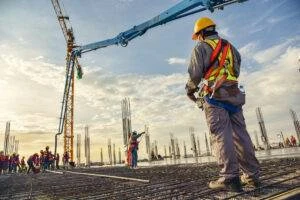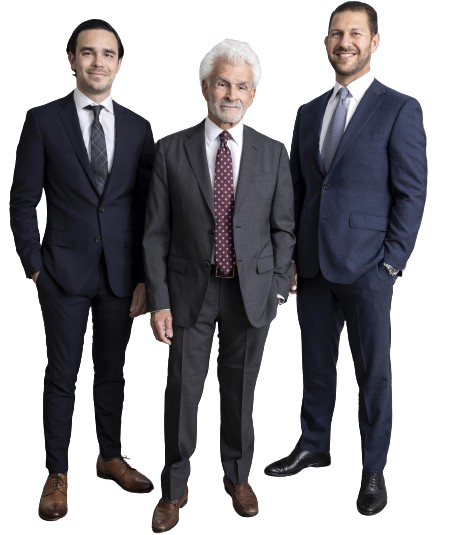
New York City’s skyline is filled with cranes that help with projects on its many skyscrapers. While they are necessary for construction, they can also be dangerous, posing significant risks at times for workers, pedestrians, and motorists. To mitigate these dangers, NYC has implemented stringent regulations governing crane operations. These are meant to protect you, but negligence can still lead to catastrophic accidents.
The Dangers of Cranes and Derricks in NYC
The sheer weight, height, and the complexity of cranes, combined with their heavy loads, create several hazards for anyone in their immediate area. They have the capability, when misused, to be the primary cause of catastrophic accidents in New York City. These accidents can be caused by:
- Structural Failures: improper setup or overloading can lead to crane collapses, endangering nearby individuals.
- Falling Objects: materials hoisted by cranes can accidentally fall, posing serious threats to pedestrians and workers below.
- Contact with Buildings: cranes operating near buildings can incidentally come in contact with buildings, causing falling debris and collapses.
Because of these dangers, there are many regulations that crane operators and construction companies must follow to protect workers and pedestrians.
Have You Been Injured In An Accident? Contact Morelli Law
877-751-9800Crane Operation and Maintenance Requirements in NYC
To operate cranes within NYC, individuals must obtain a Hoist Machine Operator (HMO) license, categorized into Class A, B, or C, each permitting the operation of specific crane types. The licensing process mandate:
- National Certification: applicants are required to hold valid certifications from the National Commission for the Certification of Crane Operators (NCCCO) corresponding to the crane types they intend to operate. A Class A license requires certifications in telescopic boom cranes (both swing cab and fixed cab) and lattice boom cranes.
- Experience Requirements: operators must demonstrate relevant experience under the supervision of a licensed HMO. A Class A license requires at least three years of experience within the five years preceding the application, with one year in NYC or a comparably dense urban area.
- Additional Training: candidates must complete a 40-hour course covering NYC’s construction and safety regulations, undergo a criminal background check, and meet appropriate medical and health requirements to operate cranes.
Equipment Inspection for Cranes
Regular and thorough inspections of crane equipment are mandated to ensure operational safety and compliance with regulations:
Pre-Operation Inspections: before initial operation at a new job site, cranes must undergo comprehensive inspections to verify structural integrity and functionality. This includes testing the boom of a mobile crane to its maximum height to ensure stability and performance.
Monthly Inspections: cranes that are relocated without significant dismantling are exempt from pre-operation inspections at each new site, provided that monthly inspections are conducted as scheduled.
Inspection Documentation: detailed records of all inspections, maintenance, and repairs must be maintained and made available for review by regulatory authorities. This ensures transparency and accountability in crane operations.
Operational Guidelines
To maintain safety and compliance, crane operations in NYC must adhere to specific guidelines:
Load Handling: operators are required to hoist loads vertically to prevent hazardous swinging, except when such operations are permitted by the capacity chart. Tag or restraint lines must be used when rotation or swinging of any load may create a hazard.
Travel Restrictions: cranes must not travel with suspended loads unless under the control of a competent, designated person responsible for the position of the load, boom location, ground support, travel route, and speed of movement.
Counterweight Specifications: the use of counterweights must align with the manufacturer’s specifications to maintain crane stability. Operating without the full amount of ballast or counterweight in place is prohibited, except under specific, controlled conditions when handling light loads.
These regulations are detailed in the NYC Department of Buildings’ codes and rules, which outline the responsibilities of crane operators and construction companies.
Traffic Control Around Cranes
Traffic management is also required near construction sites to protect motorists. This liability can fall both on construction companies as well as the city government. Protections that must be applied and maintained include:
- Sidewalk Sheds: temporary structures that protect pedestrians from falling debris, ensuring safe passage adjacent to construction zones.
- Signage and Barriers: clear warnings and physical barriers that redirect foot traffic away from hazardous areas, reducing the risk of accidents.
- Flaggers and Personnel: trained individuals may also be deployed to guide pedestrians and vehicles safely around active crane operations.
As a pedestrian or motorist, you are entitled to safe passage, clear information (including proper signage), and accessible areas that are free from obstructions and debris. If these rights are compromised, and you suffer an injury, you can seek compensation from negligent parties.
Who’s Liable in the Event of a Crane Accident in New York?
Determining who is responsible for a crane accident isn’t always simple. Multiple parties may be at fault, and each must be carefully investigated. Liability often depends on who failed to follow safety regulations, maintain equipment, or act responsibly.
Crane Operators
If an operator miscalculates a load, moves the crane unsafely, or ignores weather restrictions, they may be directly responsible for an accident. Poor training, fatigue, or distraction can also play a role. Even a momentary lapse in judgment—like swinging a load too fast or failing to check clearances—can lead to serious injuries or fatalities.
Construction Companies
The company overseeing a construction project is responsible for keeping the site safe. If they fail to enforce crane safety protocols, they can be held liable. This includes ensuring proper training for workers, conducting regular safety inspections, and following all city and state regulations. If a company cuts corners, skips maintenance, or allows unqualified workers to operate a crane, they are putting lives at risk. In some cases, they may also be responsible for hiring a negligent crane operator or using outdated equipment that should have been replaced.
Equipment Manufacturers
Cranes are complex machines with many moving parts. If a crane fails because of a defective component, the manufacturer may be held liable under product liability laws. This could involve a faulty hook, a weak cable, or a design flaw in the crane’s structure. Even a small defect in a hydraulic system or control panel can cause catastrophic failures. If a company sells a defective crane, they can also be sued for the damage their product causes.
Property Owners
Property owners are responsible for making sure construction on their land is safe. If a crane accident happens because of dangerous site conditions like unstable ground, inadequate space, or unapproved modifications, the owner may share liability. In NYC, construction projects often take place near busy sidewalks and roads. If a property owner fails to take necessary precautions to protect pedestrians from falling debris or equipment failures, they could be held accountable.
Contact our personal injury lawyers today
877-751-9800Have You Been Injured by a Crane Accident?
When accidents happen, victims suffer life-changing injuries, and families are left searching for answers. Holding the right party accountable is the first step in getting justice. It can mean securing financial compensation for medical bills, lost income, and pain and suffering. It also helps prevent future accidents by ensuring that safety violations don’t go unpunished.
If you or a loved one has been hurt in a crane accident, it’s important to act fast. Our skilled crane accident attorneys at Morelli Law will investigate the cause, identify who is at fault, and fight for the compensation you deserve.
Call or text 877-751-9800 or complete a Free Case Evaluation form




